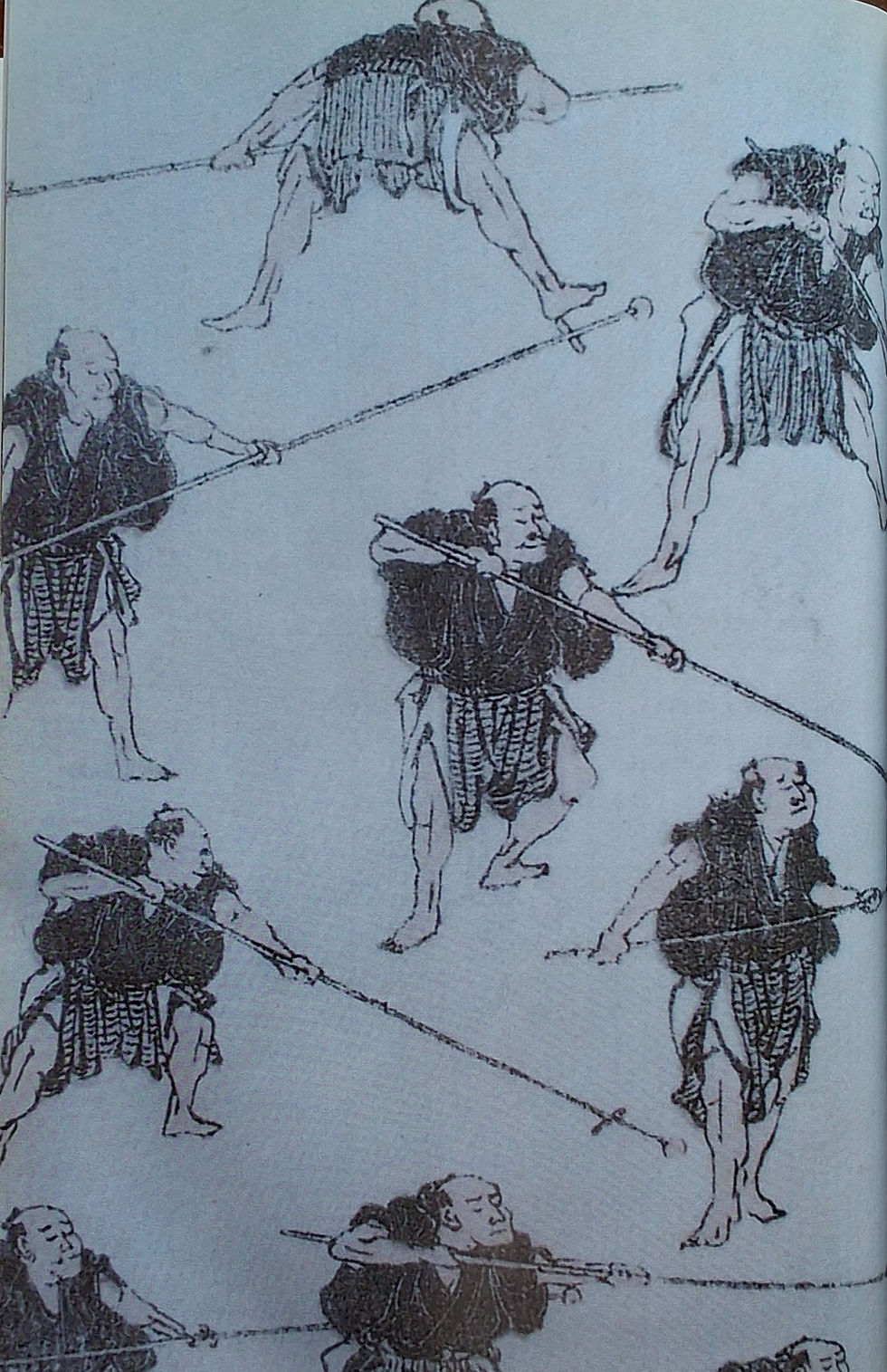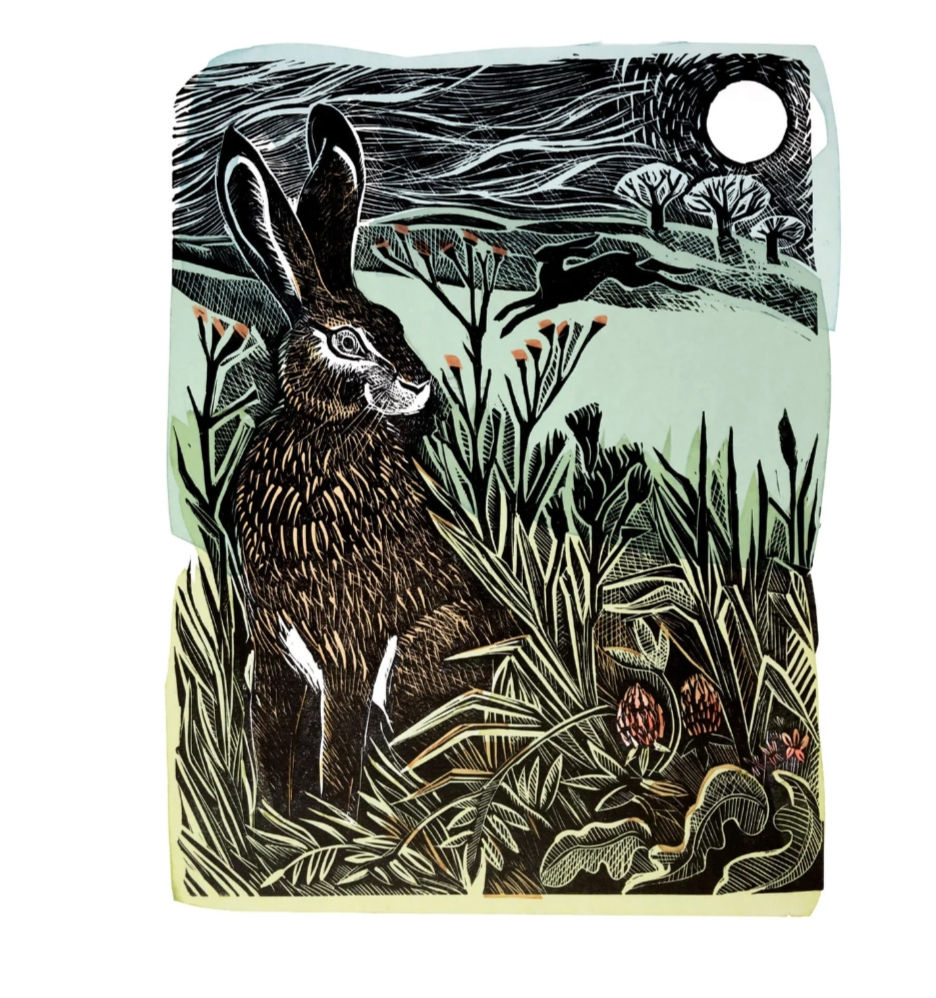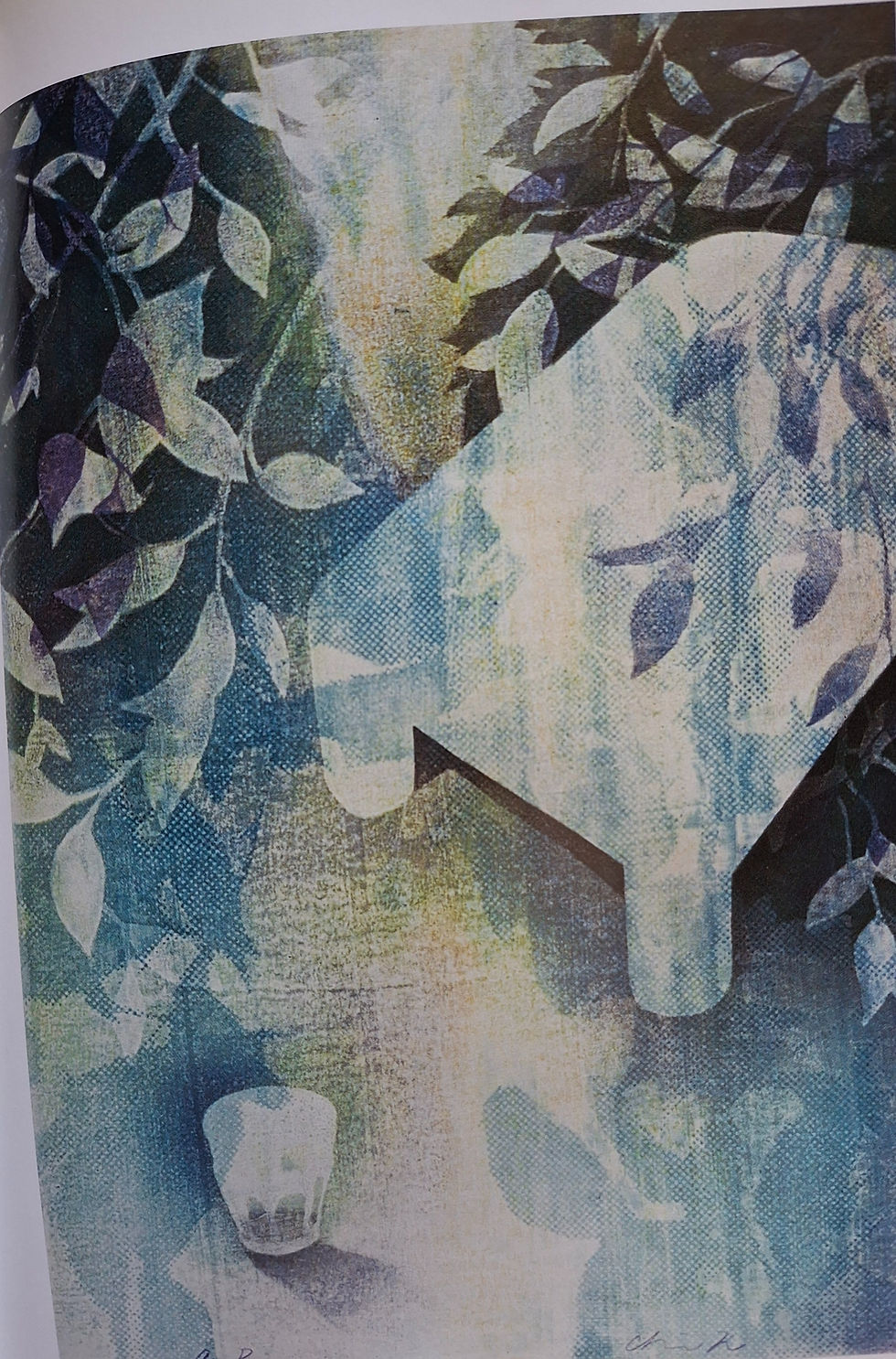Lino printing and (Japanese) Woodblock printing.
- thora50
- Mar 30
- 8 min read
Updated: Apr 2
Introduction
Lino printing and woodblock printing are similar in many respects. They both involve carving...where a line is cut out then this leaves an unprinted white area on the paper. You generally put the paper on top of the block, which is different to screen printing. It is then 'burnished' or pressure of a roller put on top to provide the image.

The Japanese wood cuts seem to be of more traditional Japanese scenes from their landscape and culture. I have not included the more well know images of waves and Mount Fugi! I prefer these lesser known images as I feel they are more fresh... the media has stifled the traditional images to some degree.
The image below is of a traditional subject ( Mount Fugi) , but approached from a more loose way of presenting the subject, almost abstract. The use of white in the picture is very accomplished.


I have been using sgraffito in my ceramic decoration. This has similarities, especially on the my more rustic carved platters. It is a carving action, though much less amplified with carving into clay, and with sgraffito, a layer is taken off to reveal the clay or a different layer of coloured slip underneath. With woodcarving it is more 'black and white', though as I will mention later, there are ways of achieving tone with a woodblock print, less so with lino.
Both lino and woodcut and sgraffito have use of negative areas. In linocut and woodcut, the image is prepared in advance ( though you can work differing images for different colours from one block).

With sgraffito the pattern occurs to a significant degree as you go along - this is one of the pleasures of sgraffito. With simple lino and woodblock they have large repeating patterns as you roller the paper over the same block multiple times, but in a different place, or with a different registration. (Registration is the alignment of the image on the paper...this can be offset slightly between images if desired.)
With lino and woodblock printing, you need to reverse print letters, not so with screen printing.
I love the freedom and looseness that lines give to the print. Also the use of a limited colour palate.

Linocut
In this process, lino is carved into to produce a relief. This pattern can then be used to repeat print the pattern many times. These patterns are exactly identical, (different from sgraffito).
You start with a drawn design, which is then transferred to the lino with a type of carbon paper, called tracedown. The design is traced using this paper, and the back of the paper is burnished to transfer the line onto the lino.
You need: vinyl - you can get soft or hard lino (vinyl), the soft ones are better for people with injuries. The harder ones have a cloth back.
a template
roller
carving tools
'relief' or water based ink
paper.
Stages of Linocut
1) Draw = mirror image of original template drawing
2) Cut
3) Print
4) Repeat
The Reduction Method is to incorporate multiple layers of colour onto a print using a single block. Lino printing is best done with a registration board, to keep designs exactly matched ( or altered slightly if this is what you want).
Burnishing is rubbing the paper on top of the block.
Lino is very 'clean' printing. It has exact repeats and can copy a design or photo. There is however a lot of skill in the carving process, I imagine.

Japanese Woodcut Printing
With woodcuts you can get the effect of the grain. This appeals to me a lot. The pigments in traditional Japanese woodblock printing are water based - they are organic (vegetable) and inorganic (mineral)

Umber, Ochre and Sienna are pigments taken from the earth, they are mainly containing iron. These were also the materials of the prehistoric artist!
Sepia is a brownish black from, for example, the ink of the cuttlefish, cochneal is a bright pink from a tropical insect, and madder and indigo are from plants.
Another group of colours used at a later stage in history are taken minerals. These colours tend to fade, whereas traditional organic and minerals don't.
There are different names for the different types of colour, they are produced in different ways. Gold and silver powders are also used.
Nikawa Sticks are ink sticks made by mixing soot with nikawa, an organic binder made primarily form buffalo hide ( sometimes horse's or other animals). Nikawa has a foul odour, so preservative ingredients that also smell nice are added.
Japanese brushes are used. They are called a hake, and are made from mane and tail hair from a live horse, mounted onto a bamboo handle. The ends of the hairs of a brush should be split. This helps to hold the colour well and not leave streaks of pigment on the block.
The Paper
The fibres used for Chinese printing and painting were bamboo, hemp, bark paper, or mulberry (kozo). The technique used is the tamezuki method...However this does not produce paper of a high enough quality for Japanese Woodblock.
The Japanese method is slightly different and is called nagashizuki. Japanese paper has to be moistened before it can be used for woodblock printing.
There are 3 main types of paper used :
1) Rag paper
2) The Japanese papers made from bamboo, the bark of the mulberry bush and other vegetable fibres.
3) Wood pulp.
In Britain, good printing paper is waterleaf and thick Japanese, which is highly porous. The artists' paper (English size) used is Royal or Imperial size.
The Drying Process
Linseed oil is often incorporated into the ink. Linseed oil dries by obtaining oxygen from the air, and will 'oxidise' to form a solid. Metals such as lead, cobalt and magnesium speed up the drying process. Use of driers can be done initially, in the final print it is of a better quality if it is left to dry naturally.
This quote is from the Japanese Wood Block printing book, listed at the end:
"Ink of good consistency will slip slowly from the palate knife ; rolled evenly on the block it should glisten like silk , giving a light hissing sound beneath the stroke of the roller."
Rolling Up
The roller or brayer is what is used to ink the relief block, known as rolling up.
The stroke of a roller is 3x its diameter. The surface is inked with repeated rolling. The thinnest film of ink is used, that will give the depth of colour needed. Lino and wood can use the texture of the brush when inked up. This is then part of the design, which I think is a nice idea.
The Barren
This is used instead of a printing press and is what transfers pressure (from the shoulder) over the whole printing block. The skin is the most important part of the barren. Traditional Japanese printers sit on the floor in front of a table that slopes away from them. The pressure is transferred down through the shoulder to the heel of the hand and then is moved across the carved area of the block, stroking into the 'hagi kento'. It is then moved in a zigzag or circular fashion. See below:


Black is used quite a lot for the main image, though above is the effective use of another monocolour, though I think I prefer a stronger colour.
Proofing and Printing.
These are the two stages of printing.
In proofing, you discover the possibilities of the block. This is exciting and is an exploration process.
In printing you get the order and precision and obtain a perfectly matched set of prints.
To proof lino and wood :
You start with a ridge of ink at the top of the ink slab, make it into a thin strip with the roller, and roll it into a thin and even surface and transfer to the block. The colours in the proof can be modified by the order in which they are applied. Its usually light colours first and dark ones last.. good to know!
A printing press can be used for lino and wood prints. In this the wood block and paper are held in place by a series of blocks, with packing on top of the paper.
Without the press, the process of transferring the ink is called burnishing. Using handrubbing the pressure applied can be altered, giving a greater range of tonal expression. You can burnish with any rounded object which is easily held. The burnisher is called the barren. A piece of paper is placed between spoon and paper to protect the back of the paper.
Using a lino block, place the paper face up on the floor with a pad of newspaper underneath. The block is then placed face downwards on the paper and you can then stamp on with one foot.
Paper cut prints
You can cut silhouettes out of paper and ink up with a roller and stiff ink. Lift the paper off with a blade and place on a newspaper and place the printing paper on top. Now print by rubbing the paper with the back of a spoon. You can make very accurate shapes with this.
You can also ink stiff paper and place the inked paper face down on the printing paper and burnish.
Multiple monoprint
Ink a shape and use to print by pressing down. Repeat.
Cardboard print
Place cut out shapes of cardboard and paste down on a board, and ink. Then use this 'block' to take the print. You can use textured paper e.g. anaglypta wallpaper, crumpled paper to take a print.
The elimination method
In this first the solid block makes the background colour. Then this is carved away for the second colour. The block is then carved again for a third colour etc. If you want to print light on top of dark you should use oil inks.
Linocut has good definition. Tone is achieved the same way as Rob suggested in sgraffito, by dots or similar. Density of dots, density of colour are a bit like bitmapping - a common thread through printing, both screen printing and linocut, and sgraffito.
Lines of cut do show up if not bevelled away completely. This look can be mimicked with sgraffito.
The finished image could be described as most effective in black and white. In my sgraffito work I am trying to keep my animals in black and white too. This also helps to make my work recognisable. I am thinking of adding some vegetation to achieve this end too.
In linocut it is most effective to have one other colour on the print, whereas in my sgraffito I am using a range of colours for the rest of the piece. I could try using only 1 other colour perhaps to see the effect on ceramics.


Kate Heiss, like Angela Harding produce beautiful prints with an obvious love of nature. (And our British countryside ). This one by Kate Heiss is a linocut, whereas Angela Harding often combines lino cut with silkscreen. On the above you can see the carved lines, which is a very desirable effect.

I really like the above scene, urban/modern, yet not from the date of the print. Again muted colours. Shows the art of woodblock dates back many hundreds (and thousands ) of years. Woodblock printing was introduced to Japan in the early 7th Century. It was used firstly to mass-produce Buddist texts.
Photography is another art form, and is related to how I draw animals when I don't have access to the live animal in situ or in a zoo. I know that my drawings with sgraffito are not perfectly true to life, like photography, so I have used imagery for imaginary plants and grasses so far. This is a bit of a surreal approach, and I am looking into the actual plants that grow where the animal I am drawing lives, and is in the habitat where the animal is found.







Comments